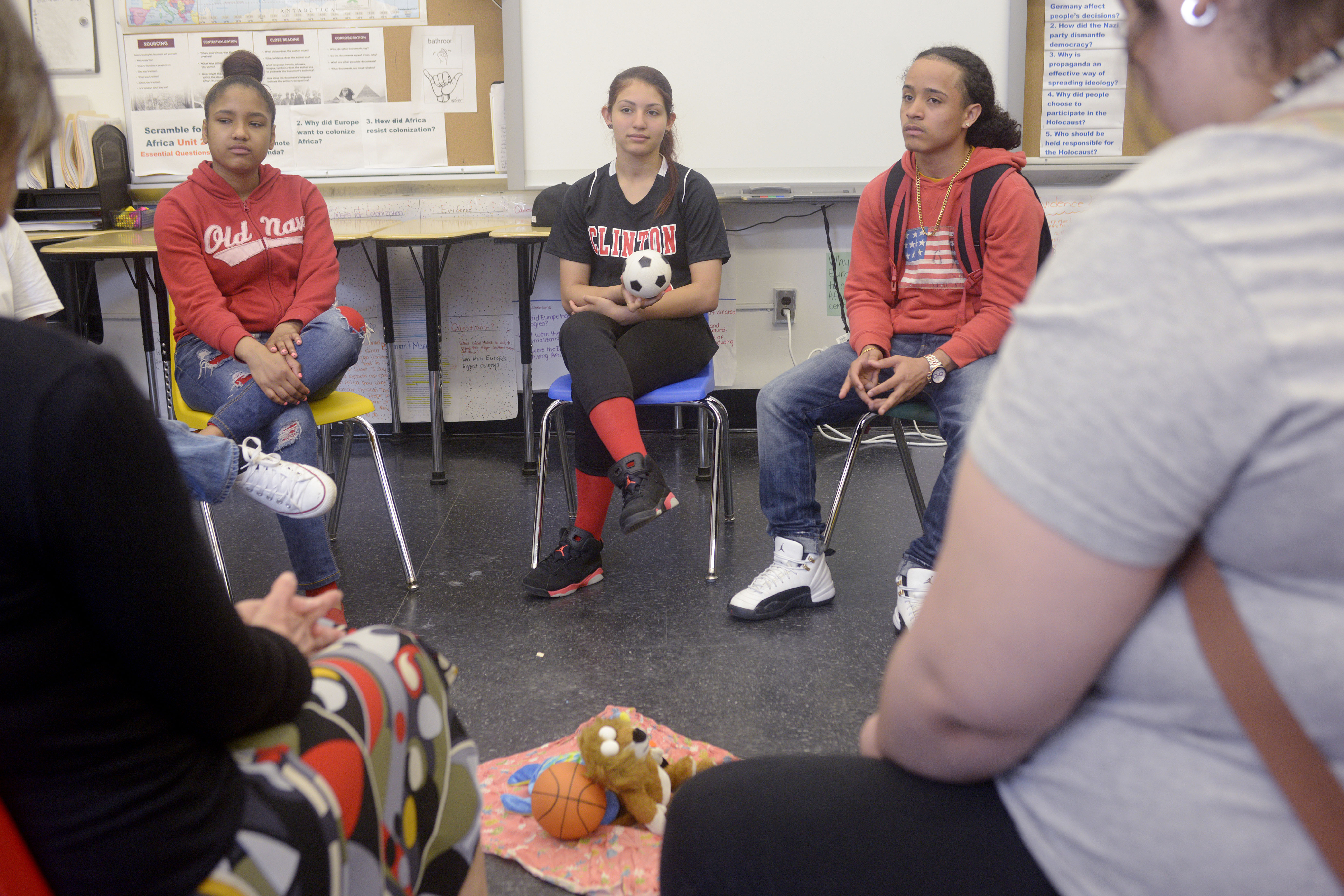To the Teacher:
Increasingly, wildfires are causing dangerous and distressing days of poor air quality in communities across the country. (See my blogpost about one such day.)
How can we help young people, and ourselves, cope with these upsetting events – and with the wider stress and uncertainty of the climate crisis?
One place to start is a "listening circle.” This activity invites young people (and adults) to share their thoughts and feelings and to support each other during challenging times.
It is one of many invaluable social and emotional learning (SEL) tools we have at our disposal to skillfully address the climate crisis – and build for climate justice – in our classrooms and beyond. For a plethora of ideas, strategies and tools that draw on Morningside Center's SEL expertise, as well as the experiences of teachers around the country, see my new book Teach for Climate Justice: A Vision for Transforming Education.

Preparation:
Find an object that you can use as a talking piece for this circle activity. Ideally the talking piece is an object that has some personal meaning for you related to connection, caring, friendship, or solidarity. Also be ready to time the activity.
For more information, see this introduction to the circle process.
Introduction
Ask participants to sit in a circle.
Ask students if they noticed, or heard about, the smoky air today caused by distant wildfires. Share that today we’ll have a chance to share thoughts, feelings, concerns, and questions about this. The process is called a “listening circle.”
Tell students that participation must be voluntary. Ask if there’s anyone who doesn’t feel comfortable participating and provide a place they can go during the listening circle.
Pair Share
Begin by asking participants pair up and talk with a person next to them (a pair-share). First one person talks while the other listens actively, paying good attention, making eye contact, maintaining good body language. Then they switch.
You keep the time, letting students know when it’s time to switch. Set the timer based on your knowledge of your group. Three minutes each generally works well. Explain that if a person stops talking before their three minutes are up, they should just enjoy the silence (rather than letting the other person take the time).
Pair-shares give people a chance to clarify their thinking before sharing with the whole group. They provide airtime for people who are uncomfortable talking in a large group, and may increase their confidence for talking in the large group.
Circle Go-Rounds
After the pair-shares, explain that each person will now have up to three minutes to share with the whole group. Anyone can pass if they want to. Again, you’ll keep the time.
Introduce the talking piece. If students aren’t familiar with the circle process, tell them that when they have the talking piece, they alone are speaking, while others in the group pay attention but don't comment. Participation should be voluntary, and what people say in the circle is confidential.
Give students a beginning prompt. It might be:
- What experience did you have with the smoke today? Or if you didn’t personally experience, what did you hear about it?
Start the timer, and begin by sharing what you yourself want to say.
Then pass the talking peace to the person on your left or right. The circle finishes after every person has spoken.
After the first go-round, consider additional prompts, such as:
- What emotions came up for you related to the smoke you experienced or heard about?
- What thoughts or questions do you have about it?
- Are there any helpful things we can do (for ourselves or others) when the air is smoky?
- What can we do as a larger society about this problem, in the short term or the long term?
If participants ask questions and/or share misinformation, you may want to spend some time after the listening circle correcting any misinformation and using the questions as an opportunity for research and discussion.
Closing
As a final go-round, invite every student to share their response to this prompt:
- What is one wish you have for any people or animals that are struggling with the smoke today?